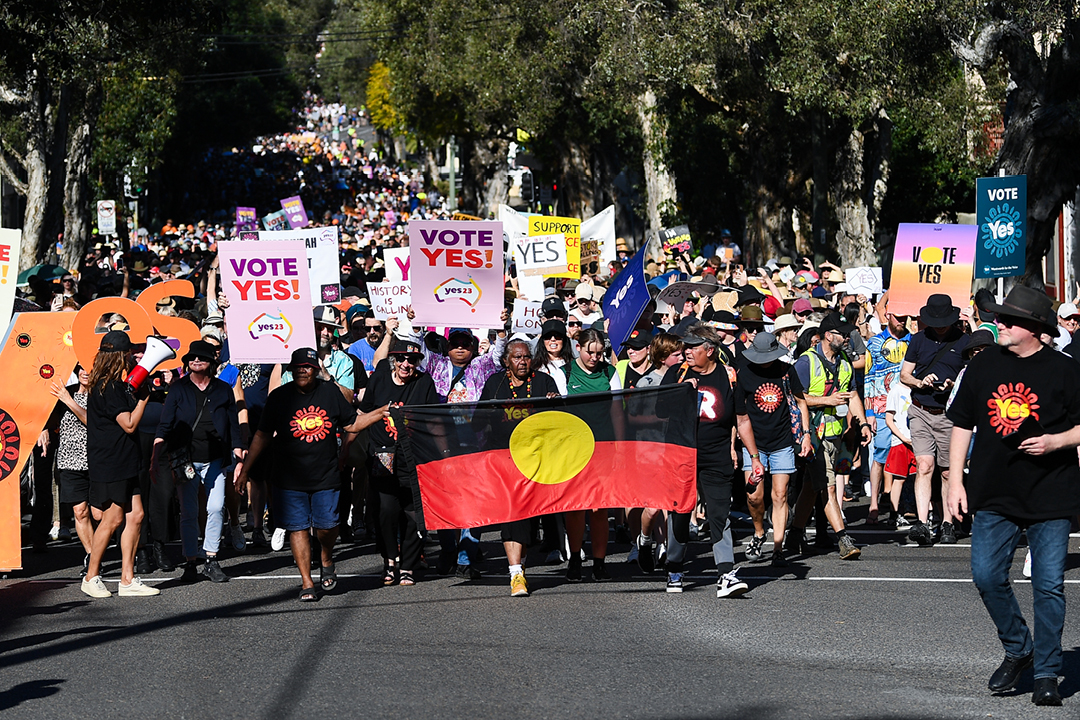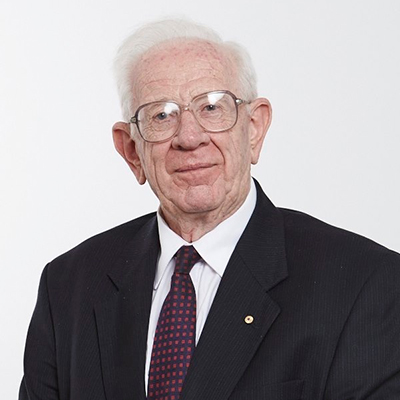

Both John Howard and yours truly are of the same age, he born on 26 July 1939, me on 26 August. Consequently, we first voted NO at a New South Wales state referendum in April 1961 with our first federal general election votes (for the Menzies government) being cast in December 1961. We have known each other well since our first Sydney University year 1957. However, these days we have conversations only following funerals of mutual friends. That happens quite often.
Following the May 2023 service of thanksgiving for the life of Tony Eggleton AO CVO, former Liberal Party federal director, we came round to discussing the forthcoming referendum, which we both predicted would go down. He then told me the story about his mother and the 1951 referendum, and I told him my story about my mother and the 1967 referendum.
In September 1951, there was a stand-alone referendum on one question only. It was the first federal case of one question being put to the people separate from an election. (The current referendum is the second case.) Anyway, the question was: “Do you approve of the proposed law for the alteration of the Constitution entitled ‘Constitution Alteration (Powers to deal with Communists and Communism) 1951’? “. Menzies sought constitutional power to ban the Communist Party. Howard’s story is that his father voted YES and his mother NO. His point is that the Australian people were quite right to reject Menzies on that occasion but also that women typically show better judgment than men. His father never dissented from the Menzies view, his mother just once, in September 1951. Menzies was rebuffed and made to himself an internal vow: “There will never be another referendum while I am Prime Minister”.
The next referendum was under Harold Holt in May 1967, Menzies having retired in January 1966. There were two questions, and it was the first of two occasions when the Australian people took the bait but not the hook. (The second case was in May 1977 under Malcolm Fraser.) The motivation for the referendum was that the Menzies-Holt government had a political problem with the redistribution of seats for the House of Representatives. They thought to solve that problem by amending the Constitution to enable the House to expand without needing an increase in the number of senators. (The position since 1901 has been that the number of House members shall be about twice the number of senators).
The origin of that “reform” came in a report whose title was Report from the Joint Committee on Constitutional Review, 1959. That was a bipartisan committee set up in the fourth term of the second Menzies government. Unfortunately for Menzies, Labor chose its members from among its cleverest politicians while the Liberal Party and the Country Party chose insignificant back benchers. There was one exception, Senator Reg Wright (Liberal, Tasmania) and he wrote ringing dissents from the main recommendations of the report. (See pages 176 to 188 of the report.)
Menzies rejected the report totally when it was published in November 1959 but later saw political benefit from taking just two of its many proposals to the people. He thought to do that in November 1965 as I describe below.
The point of the story about my mother is that she asked me to explain both 1967 proposals and give her some advice. I told her that as a Canberra resident I was not entitled to vote but had I continued to live in Sydney I would vote YES to both questions. However, when the referendum was over, I asked her how she voted. It was NO to both questions. Puzzled, I enquired why. She said: “You did advise YES but you described both proposals in tones so negative that I thought you really meant NO to both.”
So, how come? In November 1965 Menzies introduced to the House of Representatives two bills for the referendum I believe he never intended to pursue. The first was titled “Constitution Alteration (Parliament) 1965” and the second was titled “Constitution Alteration (Repeal of Section 127) 1965”. He knew the Labor Party would support both proposals at any referendum. During his speech Menzies briefly described both proposals but dealt almost entirely with a different question, namely why he refused to make two changes in the second question. Everyone agreed to the repeal of section 127 that read: “In reckoning the numbers of the people of the Commonwealth, or of a State or other part of the Commonwealth, aboriginal natives shall not be counted.” That repeal had been unanimously recommended in Chapter 9, pages 54, 55 and 56 of the above-named report.
The problem was that the aboriginal leaders of the day wanted a change also to section 51 that then read: “The Parliament shall, subject to this Constitution, have power to make laws for the peace, order, and good government of the Commonwealth with respect to (i. to xxv.) and (xxvi.) The people of any race, other than the aboriginal race in any State, for whom it is deemed necessary to make special laws:”
That power was put into the Constitution by the founding fathers to give the Commonwealth power to make laws discriminating against kanakas, Chinese, Japanese or any race it might want to discriminate against. But the founding fathers were not as racist as is now generally described. They wanted to save the aboriginal race from such discrimination, so they put into the section the words “other than the aboriginal race”. Menzies would not have a bar of the idea of lumping together as “discriminatory” two sets of words, one discriminating against aborigines and the other preventing discrimination against aborigines by exempting them from the punishment that might be handed to some other race. At the time I totally agreed with Menzies.
So, what was the thinking of the aboriginal leaders? It went along the lines that a power to discriminate againstaborigines could be treated as a power to discriminate in their favour. So, once the Commonwealth gained that power it could over-ride nasty laws in Queensland, which were characteristic of the Bjelke-Petersen era. In addition, there were all sorts of other ways to help aborigines with this new Commonwealth power.
Anyway, Menzies retired in January 1966 and Holt, acting on the strongest advice from then Liberal federal director Bob Willoughby, cancelled the referendum. Holt went on to a landslide victory in November 1966 and then proceeded to his referendum, having earlier decided that the timing was not right for him in 1966. In 1967, he listened to the aboriginal leaders and deleted the words in section 51 whose deletion they requested. What had under Menzies been “repeal of section 127” became “aboriginals” under Holt. But, of course, the first question was the same. Both men wanted to increase the numbers in the lower house but peg the numbers in the Senate.
The effect was that the first question became heavily contested and almost completely over-shadowed the second. It was widely described as a cynical gang-up by big parties against minor parties, who could only ever win Senate seats courtesy of proportional representation. The slogan became “no more politicians” and went down badly. The people rejected the hook.
On the question titled “Constitution Alteration (Aboriginals)” not a single member of federal parliament said NO which meant that there was no case for NO in the official pamphlet. The YES case was a combination of information and misinformation. The proposal, the politicians averred, was simply to get rid of racist words discriminating against aborigines – 19th Century words that had no place in the enlightened mid-20th Century. The aboriginal leaders campaigned strongly for YES while nobody publicly said NO. The voters took the bait, responding to the sloganeering of NO to “more politicians” but YES to “aboriginal rights”.
The point about that conversation with my mother was that I described the whole exercise as cynical, designed to solve the Liberal Party’s redistribution problems. But still vote YES to the first question because you vote Liberal! However, I also told her of my unhappiness with the second question. I was most unhappy with the idea that words were to be deleted which prevented discrimination against aborigines – but still vote YES because we should never let the perfect be the enemy of the good. I was very unhappy with the misinformation being pumped out by the YES campaign.
As soon as Holt won that power, he announced he would not use it – but Gough Whitlam was very keen to use that power to enact laws discriminating in favour of aborigines. They all turned a blind eye and a deaf ear to the certainty that the day would come when that power would be used to discriminate against aborigines.
Before polling day, I’ll write another article for Switzer Daily on the other referendum that has been mis-described, that of November 1999. In that article I’ll also give some friendly advice to Anthony Albanese.
It was simply a case of typical Australian pragmatism. Also, don’t fall for the myth that the 1967 referendum made the Australian Constitution “colour blind”. It has never been sensible to describe our Constitution in that way.
Why, then, are these myths so pervasive? Essentially, it is because both the YES and NO campaigners today think they “own” the 1967 result. It was promoted by the aboriginal leaders of the day so today’s aboriginal leaders should be rewarded with a YES vote, just as they were. But the NO camp says: “they created the colour blind Constitution that we so cherish today. Keep it colour blind. Vote NO.”
Before polling day, I’ll write another article for Switzer Daily on the other referendum that has been mis-described, that of November 1999. In that article I’ll also give some friendly advice to Anthony Albanese.